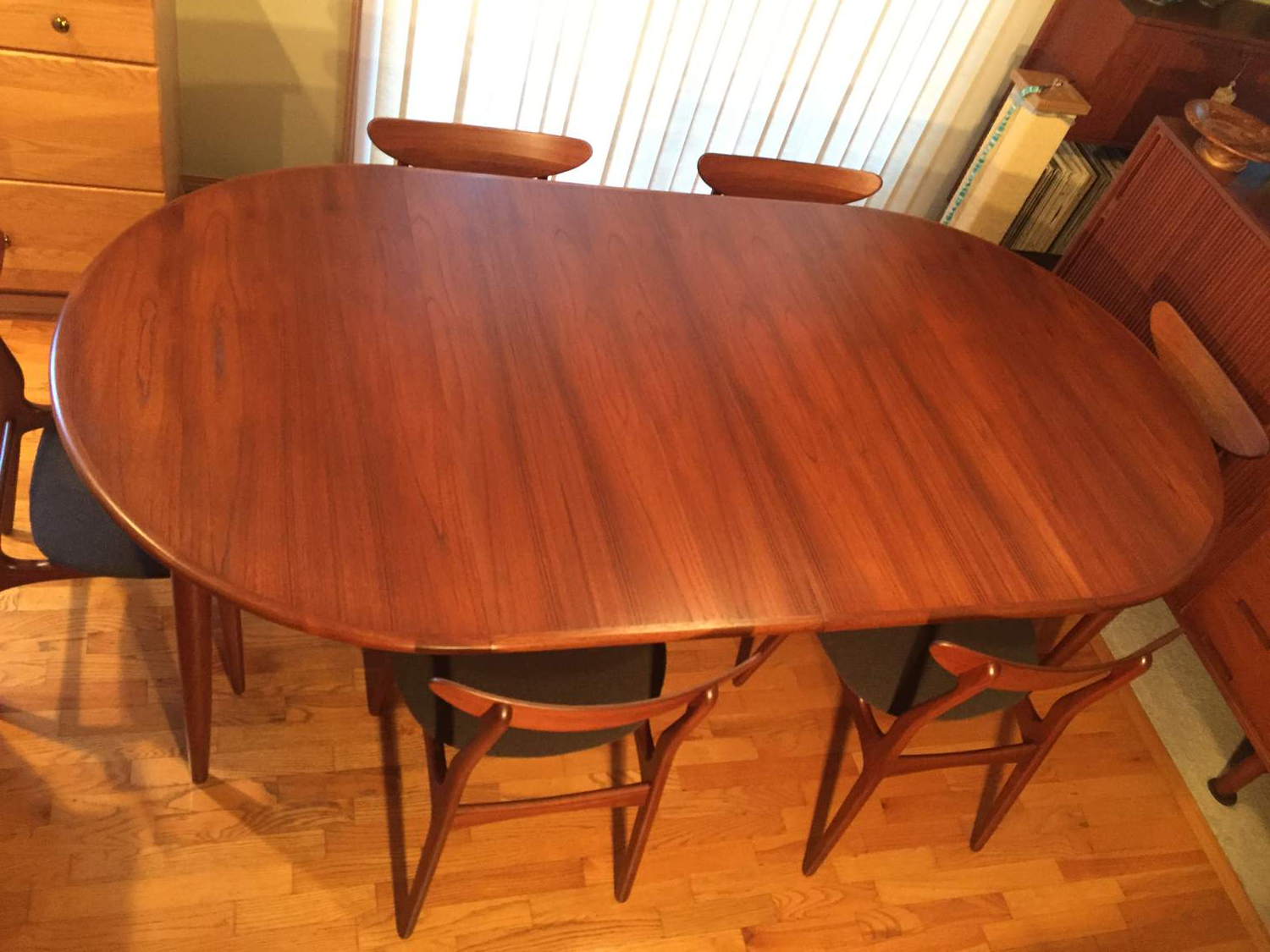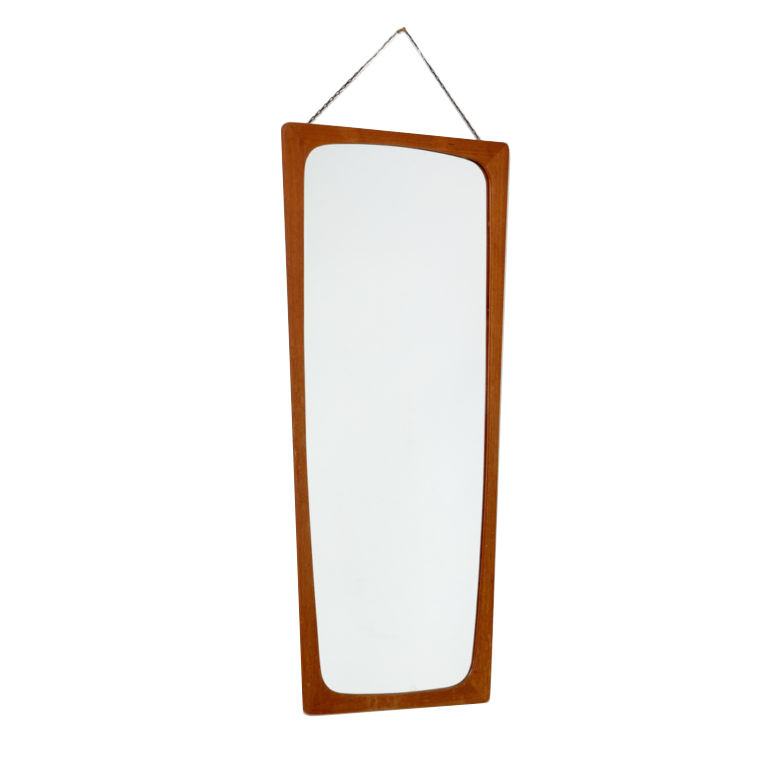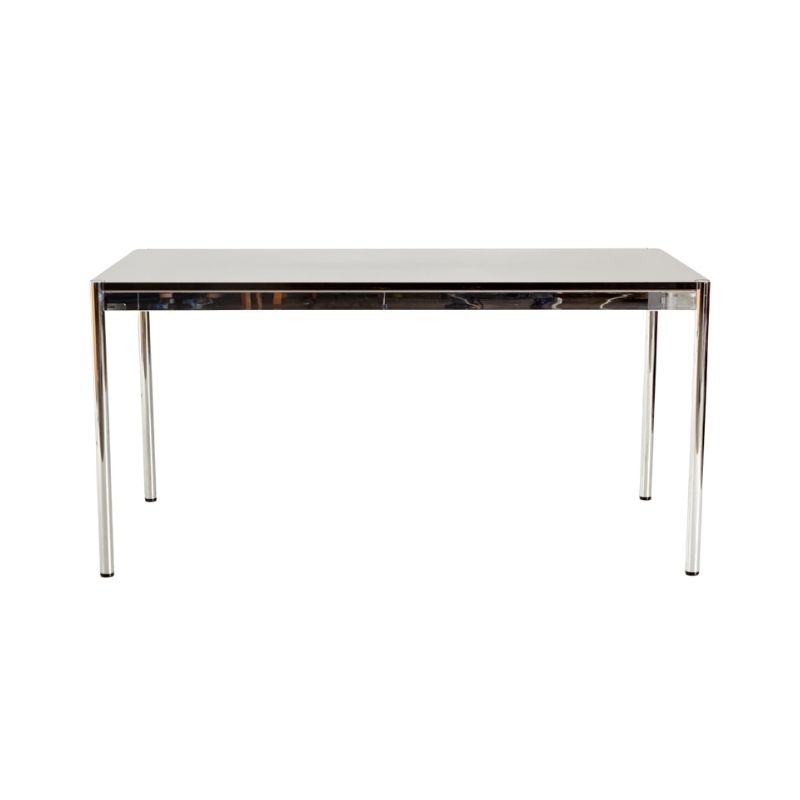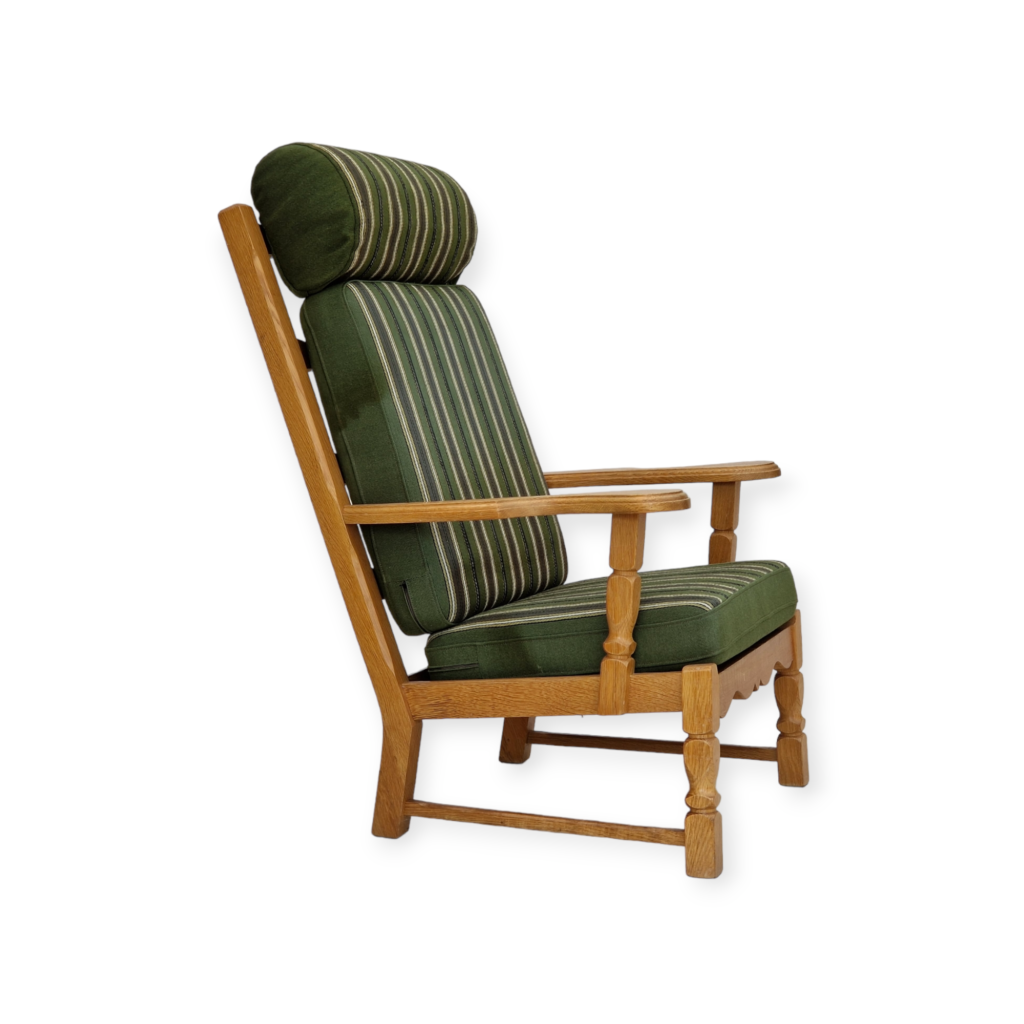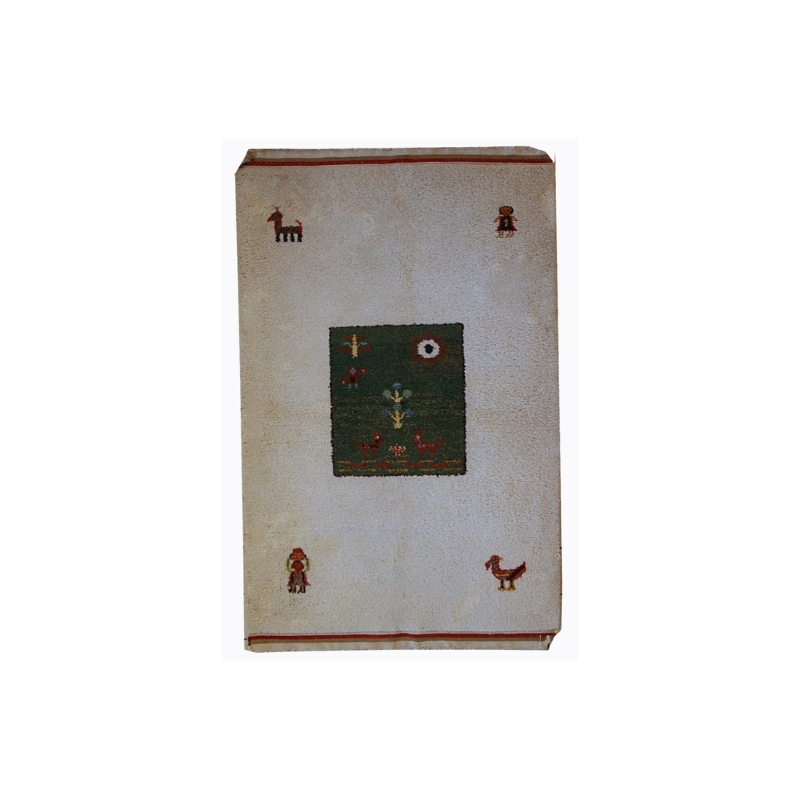Looking for ID help on 6 dining chairs that we recently acquired with a table. The only legible identifying mark is a burned in stamp which says "made in Denmark, imported by Edgaard Inc, Los Angeles California"
I have searched "Edgaard inc" without any real success. While I have found other examples of the chairs, I have been unable to find any information relating to Edgaard inc, and certainly no information regarding the possible designer or manufacturer.
There is no visible attachment at the backrest, so I am assuming that they are doweled and glued. And the sides of the chairs are finger jointed to the front/back legs. The seat is wide and slightly ovular in shape.
Some of the design elements are reminiscent of Harry Ostergaard, and some remind me of Hans Wegner (but I don't really think they are Wegner)
I am perplexed. Are any of you familiar with this design, or Edgaard Inc? Is it possible that these chairs were designed by Harry Ostergaard?
All opinions are welcomed and much appreciated! <img class="wpforo-default-image-attachment
<img class="wpforo-default-image-attachment
Thank you very much for your response Leif, I very much appreciate you taking the time.
The backrests are actually solid, not veneer. Here is a photo looking down on the top of the backrest...the wood grain is visible throughout.
I doubt this sheds any additional light on the designer, but I thought I would note it just in case it is helpful. Again, THANK YOU!
I believe the backrest is a layer of teak veneer over top of an Afrormosia core.
I suppose it is possible I am wrong about the presence of teak veneer on top of the Afrormosia, but the photo where you can best see the grain on the backrest looks very teak like. It is also noticeably lighter than the core, which would be consistent contrast for a sun darkened Afrormosia next to teak (which bleaches in the sun).
Or it is just a trick of the light in your photos, which have strong shadows, and it is just Afrormosia, no teak at all.
Hello Leif- thank you for your additional input.
After your latest post we examined all 6 chairs very carefully. It appears to us that the backrests are solid. There seems to be no visible transition from veneer to core...it just looks like one solid piece of wood.
However we could be wrong. I am confident that your trained eye is significantly more keen than ours, and I greatly value your opinion. Thank you once again!
I suspect that the back rest is made of laminated strips of wood bent to the curve of the back, and then covered with a thin layer of face grade veneer. This would be somewhat standard.
You are saying it is "solid wood" and to the degree that it is wood from front to back you are definitely right.
But let's back up, there are a number of common as that a backrest might be made by the Danes:
1. Laminated bent plywood substrate covered in veneer
2. Laminated bending veneer (each about 1/8 inch thick) with the grain aligned and optionally covered with a face veneer.
3. Carved out of solid wood
4. Steam bent out of a solid piece of wood.
Your backrest is not absolutely not carved out of a solid piece of wood. It is doubtful that it was steam bent from a solid piece of wood. It is does not appear to be a plywood substrate covered in veneer. It does appear to be laminated bending veneer.
I believe the laminated bending veneer has a layer of normal teak veneer over top of it. The Danes did this a lot.
If you want to continue to insist that it is "solid wood" that is fine, but it is essentially meaningless given that it basically describes all the options above.
More photos would be the simple way to figure out the answer.
Hey tchp,
I don't know how to direct message on here. I was hoping to see if your interested in selling that Aubock nut cracker. I'd be willing to offer $1200...after paying $2 that should net you a pretty, pretty, good profit! I'd like to get it for a friend for Xmas who's crazy for C.A. Surely $1200 is enough for pete's sake? 🙂
Dan
If you need any help, please contact us at – info@designaddict.com


